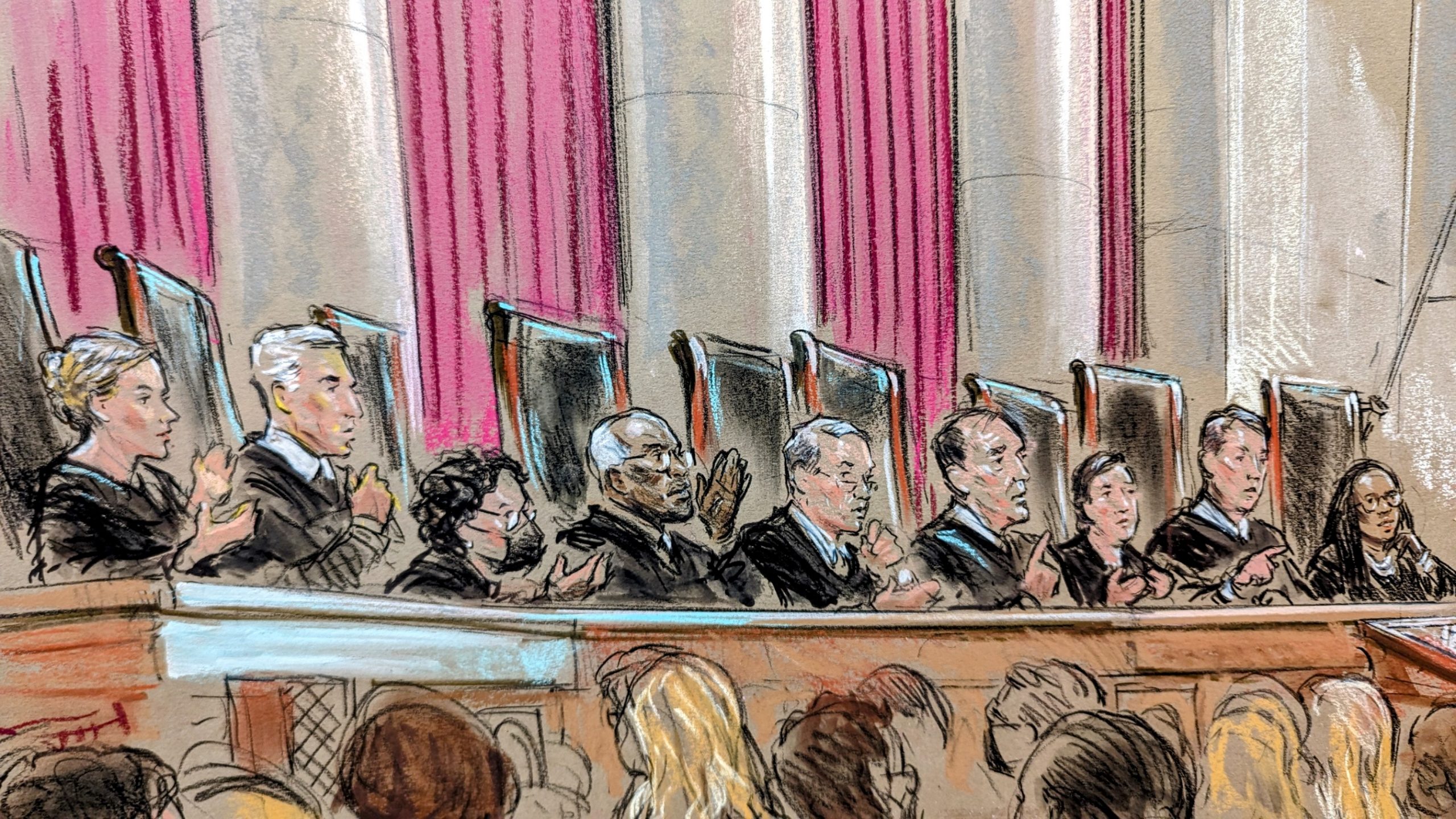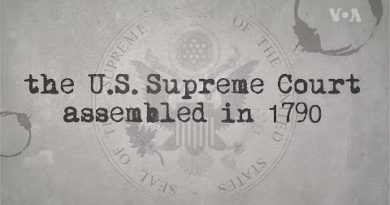Court divided over funding mechanism for consumer watchdog
ARGUMENT ANALYSIS
on Oct 3, 2023
at 5:33 pm
The justices will hear oral arguments in three cases from Oct. 2 – Oct. 4. (William Hennessy)
The justices were divided at oral argument on Tuesday in a challenge to the constitutionality of Congress’s decision to provide funding for the Consumer Financial Protection Bureau through the Federal Reserve, rather than the normal annual appropriations process. A federal appeals court in Texas ruled earlier this year that the CFPB’s funding structure violates Article I, Section 9 of the Constitution, known as the appropriations clause, which provides that “[n]o money shall be withdrawn from the Treasury, but in Consequence of Appropriations made by Law.” But it was not clear on Tuesday whether there were five votes on the Supreme Court to affirm that decision, with at least two of the court’s conservative bloc – Justices Brett Kavanaugh and Amy Coney Barrett – indicating that they were skeptical of the challenge.
Congress created the CFPB in the wake of the 2008 financial crisis, giving it the power to enforce a range of federal consumer finance laws. To help ensure the agency’s independence from political control, the CFPB receives its funding from the Federal Reserve, which is in turn funded through the fees that it charges for the services that it provides.
The dispute before the court on Tuesday began as a challenge by two industry groups to a 2017 rule regulating payday lenders. A panel of the U.S. Court of Appeals for the 5th Circuit, made up of three judges appointed by former President Donald Trump, rejected the groups’ challenge to the substance of the rule, but it agreed with the groups that the CFPB’s funding structure violates the appropriations clause.
Defending the funding structure on Tuesday, U.S. Solicitor General Elizabeth Prelogar told the justices that the lower court’s decision was the first time that any court has held that Congress violated the appropriations clause by enacting a statute to fund an agency. Since the earliest days of the country’s history, she observed, Congress has regularly approved similar standing appropriations for agencies like the U.S. Customs Service, the U.S. Post Office, the U.S. Mint, and (in the 19th century) a national bank. In fact, she noted, when Congress wanted to limit standing appropriations, it knew how to do so – as evidenced by a separate provision of the Constitution, which requires Congress to appropriate money for the army at least every two years.
Several of the court’s conservative justices, however, expressed concern that if the CFPB’s funding structure passes constitutional muster, there would be very few restrictions on how Congress could allocate funding. Justice Clarence Thomas voiced this worry first, asking Prelogar whether the appropriations clause imposes any limits on Congress, other than the requirement that it pass a law to allocate funds.
Justice Neil Gorsuch echoed Thomas’s concern. Under the CFPB’s theory, he suggested, Congress could pass a law that did not cap an agency’s funding, so the president could decide to take one trillion dollars without violating the appropriations clause. At the same time, he continued, it would also be constitutional for the president to decide not to take any funding for an agency.
Prelogar emphasized that even if the appropriations clause does not itself impose any limits on Congress, in this case the CFPB’s funding structure is “nothing new or unprecedented.” Instead, she stressed, the CFPB’s funding involves “a specific type of appropriation, a capped lump-sum appropriation that’s standing for an entire agency” – much like other agencies and, in particular, other agencies that act as financial regulators.
Chief Justice John Roberts was unconvinced, telling Prelogar that she was taking a “very aggressive view” of Congress’s authority that, at the same time, also gives Congress more power to give away. If Congress and the White House were controlled by the same political party, Roberts posited, Congress might want to give up some of its authority to empower the executive branch.
Justice Samuel Alito pushed back against Prelogar’s invocation of agencies with similar funding structures as evidence of a long history of such structures. He pressed her to provide the best example of another agency with features similar to the CFPB’s.
Prelogar pointed to the Customs Service, noting that when it was created in 1789 it was one of the most important agencies in the U.S. government. It had a standing, uncapped appropriation, she said, funded by the money that it collected.
Alito was not satisfied, asking Prelogar for an example of another agency, like the CFPB, whose funding came from another agency that was itself not funded through the normal annual appropriations process.
Prelogar refused to concede that it matters whether there is another agency with an identical funding structure. This is a case, she told Alito, about Congress’s power over the purse.
Representing the industry groups, lawyer Noel Francisco (who served as the solicitor general during the Trump administration) agreed with Prelogar that the dispute centers on Congress’s power over the purse, which he described as one of Congress’s most important powers. But Francisco urged the justices to put limits on that power here, warning that if Congress can provide such open-ended funding, unchecked by political control, for the CFPB, it can do the same thing for virtually any other federal agency. And that, Francisco cautioned, “would work a sea change in the separation of powers” between the branches of government.
Justice Elena Kagan questioned the premises underlying Francisco’s argument. Referring to Francisco’s contention that the cap of approximately $600 million on the CFPB’s funding was so high that the agency had never actually come close to using all of its funding, Kagan observed that $600 million is a “rounding error in the federal budget.” And in any event, she queried, wouldn’t the fact that an agency had not used all of its funds be a good thing – as a recent end-of-year report by the chief justice had suggested when discussing the judiciary’s budget?
Barrett soon chimed in, telling Francisco that she was “struggling to figure out” what standard courts would use to decide whether a cap on an agency’s appropriation was too high.
Justice Ketanji Brown Jackson voiced a related concern, telling Francisco that she was worried that, if the 5th Circuit’s decision were to stand, judges would overstep their roles if they started to police the form of Congress’s appropriations to determine whether they violate the appropriations clause. Where, she asked, are the limits that Francisco was advocating in the text of the appropriations clause?
If some of the court’s conservative justices were worried that adopting the government’s position would, as Francisco contended, result in virtually no restraints on how Congress could appropriate funds, other justices were equally concerned about what upholding the lower court’s decision might mean for other agencies. Kagan told Francisco that it “sure seems that on your view, the Federal Reserve would be unconstitutional” because of the similarities between its funding structure and that of the CFPB.
And Sotomayor asked Francisco whether his rule would jeopardize the funding structure of any agency that, like the CFPB, returns money that it does not use to the Treasury.
With the court divided, Kavanaugh may hold the key vote. He asked relatively few questions, but he did – significantly – note in comments to both Prelogar and Francisco that Congress could change the funding scheme “tomorrow and there’s nothing permanent or perpetual about this.”
With the focus squarely on whether the agency’s funding mechanism violates the appropriations clause, the court spent relatively little time on what should happen if a majority agrees with the lower court that it does. In response to a question from Sotomayor (who appears to have a bad cold and was fairly quiet during the argument), Prelogar urged the justices to avoid a sweeping ruling that, like the 5th Circuit’s, would call into question not only the payday lending rule but also virtually all other rules and regulations issued by the CFPB. Such a decision, she said, would be a “profound disruption” to the economic markets.
Francisco countered that the problems in the funding mechanism were sufficiently extensive that the court could not simply excise specific provisions from the funding statute. Instead, he suggested, Congress would effectively have to start over again and create a valid appropriation for the CFPB – at which point it could also make clear that the agency’s prior rules and regulations were still good law.
A decision in the case is expected sometime next year.
This article was originally published at Howe on the Court.






